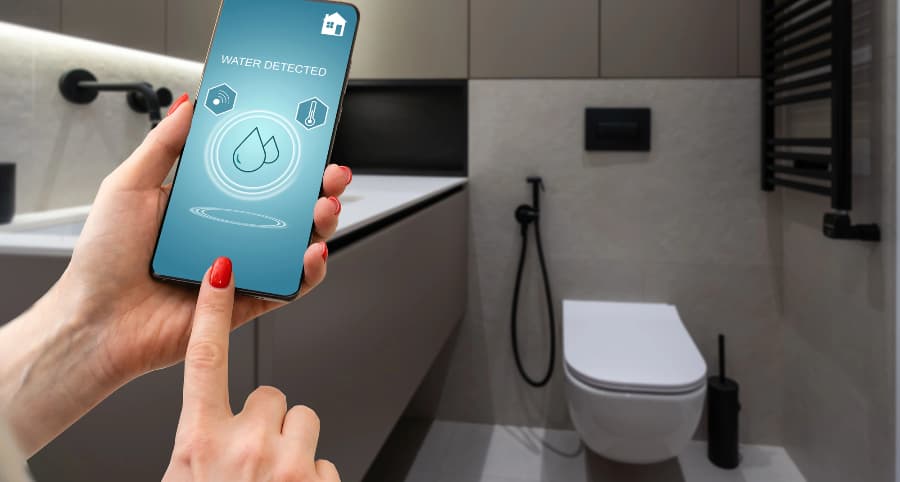How does a water sensor work and why install one with your Bloomington smart home?

One small leak at your house can cause significant issues and thousands of dollars worth of damage. You must protect against this risk; thankfully, there’s a simple way to accomplish this. A water sensor is a simple, effective, and budget-friendly solution. Explore how they work and why you ought to incorporate water sensors into your Bloomington smart home.
How water sensors safeguard Bloomington your home
Water penetrates homes in many ways, whether from a broken appliance, plumbing failure, storm-related incident, or human error. However it occurs, you have to know right away, and this is where water sensors come in. But how do they really work?
Most water sensors are conductive and function with a pair of electrodes. When water reaches the electrodes, an electrical connection is created, triggering your alarm. You’ll also discover capacitive sensors that give off an electrical field. When water reaches the conductive parts of these components, the field is interrupted, and your alarm triggers. Optical sensors utilizing infrared LED light are an additional possibility.
Some water sensors give you more
Some innovative water sensors offer even more defense as they use integrated temperature sensors. This is an effective way to prevent pipe freezing. If there’s an extreme decrease in temperature, you’ll be notified at once. Taking measures before pipes break will save you from water damage and costly repairs.
Why incorporate water sensors into your Bloomington smart home?
When water issues arise, you must be notified at once. You can achieve this aim by integrating water sensors into your smart home. Whether you’re on site to hear the alarm or away, you’ll receive an instant notification on your mobile device. In addition, your 24-hour monitoring team will be alerted. Each moment is critical in a water emergency to limit the destruction and disruption to your family.
Where should you place water sensors?
Any area susceptible to an influx of water is an appropriate position for water sensors. Consider installing in these spots:
- Bathrooms: Position at the back of toilets or close to bathtubs.
- Basements: Water commonly enters basements via leaky walls or due to excess rain or faulty sump pumps.
- Next to water heaters or appliances: Any water-using appliance might leak in time.
- Below sinks: Water sensors are perfect for identifying pipe leaks in areas hidden from view.
- Attics: Identify roof leaks early and prevent expensive repairs.
Get water sensors with your Vivint smart home
Give your property the comprehensive protection it deserves with advanced tools from Vivint. Our water sensors in Bloomington connect to your Vivint mobile app to provide automatic updates when your alarm is triggered. You also benefit from incorporated temperature sensors to prevent frozen pipes. Explore the smart home devices available in Bloomington by calling (812) 579-4884 today.
